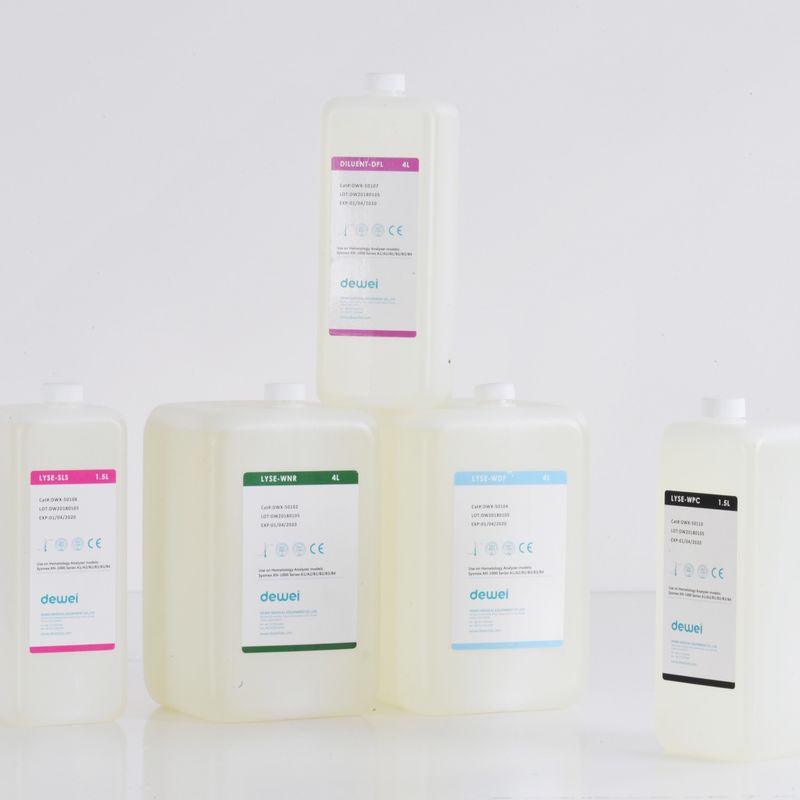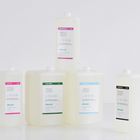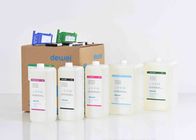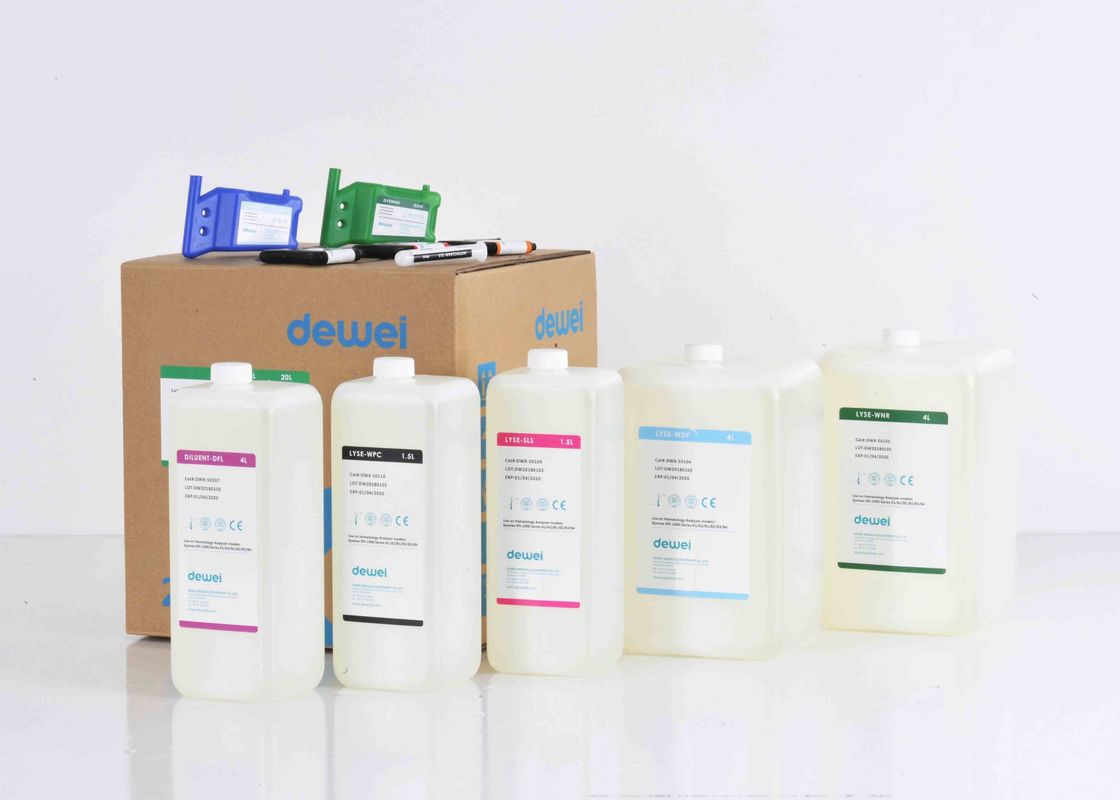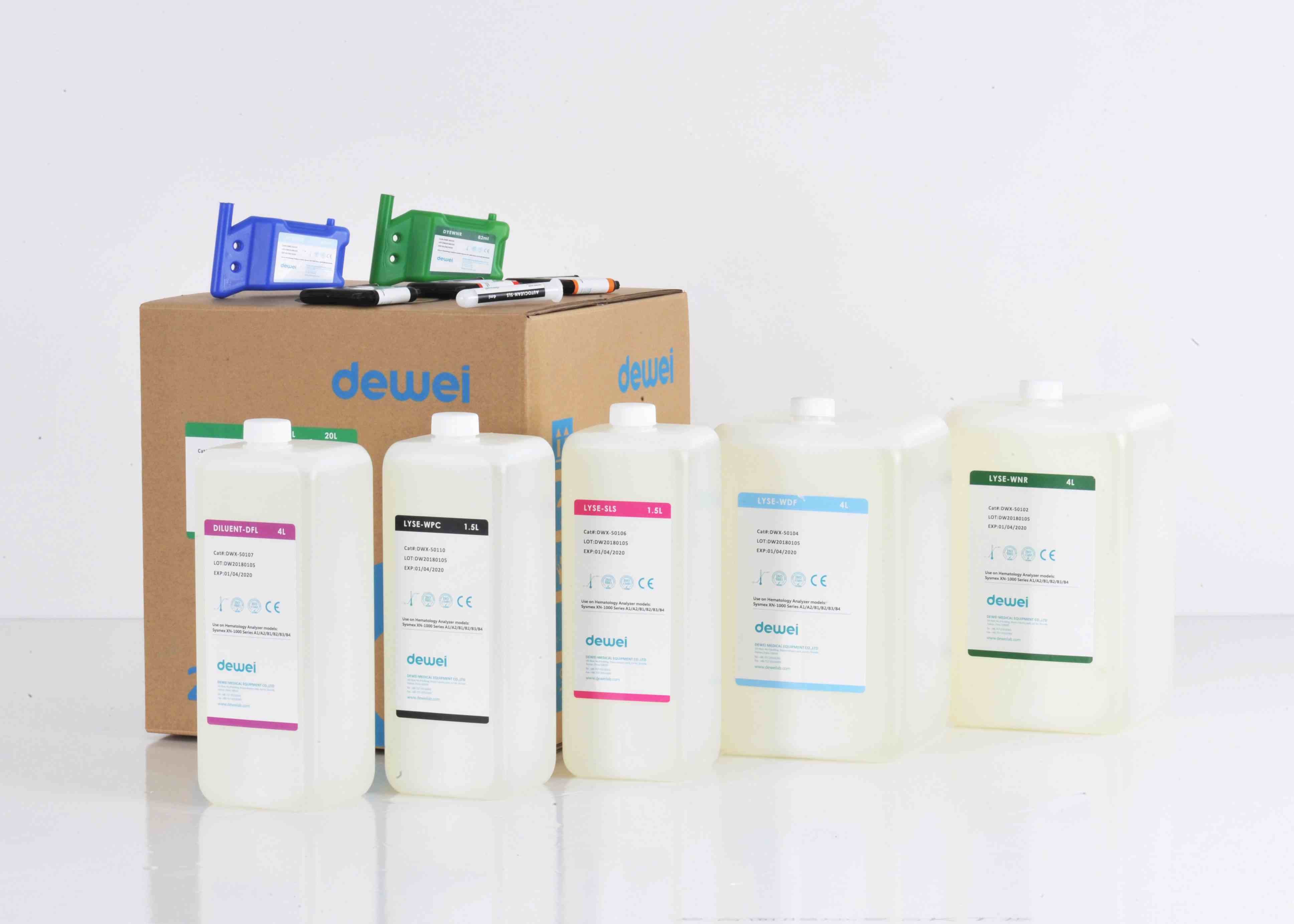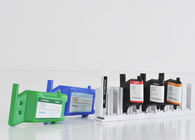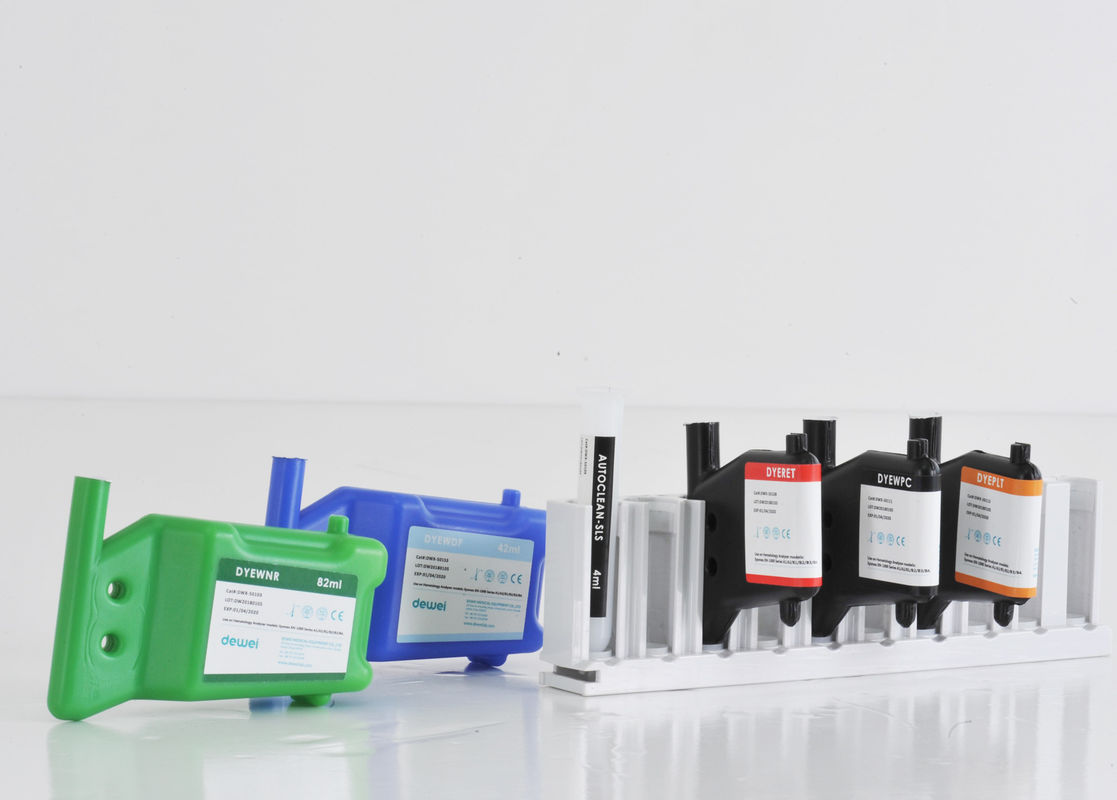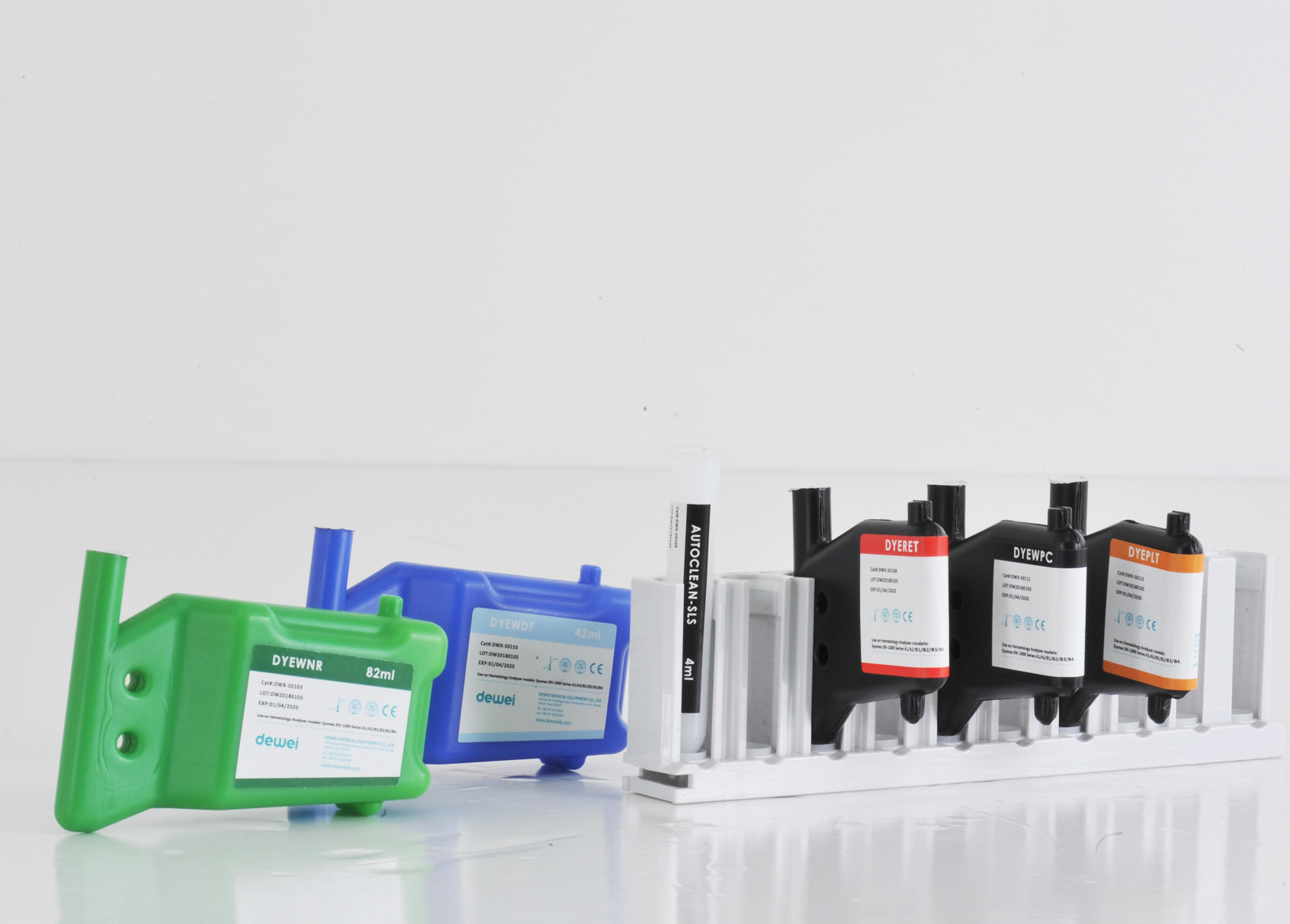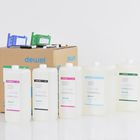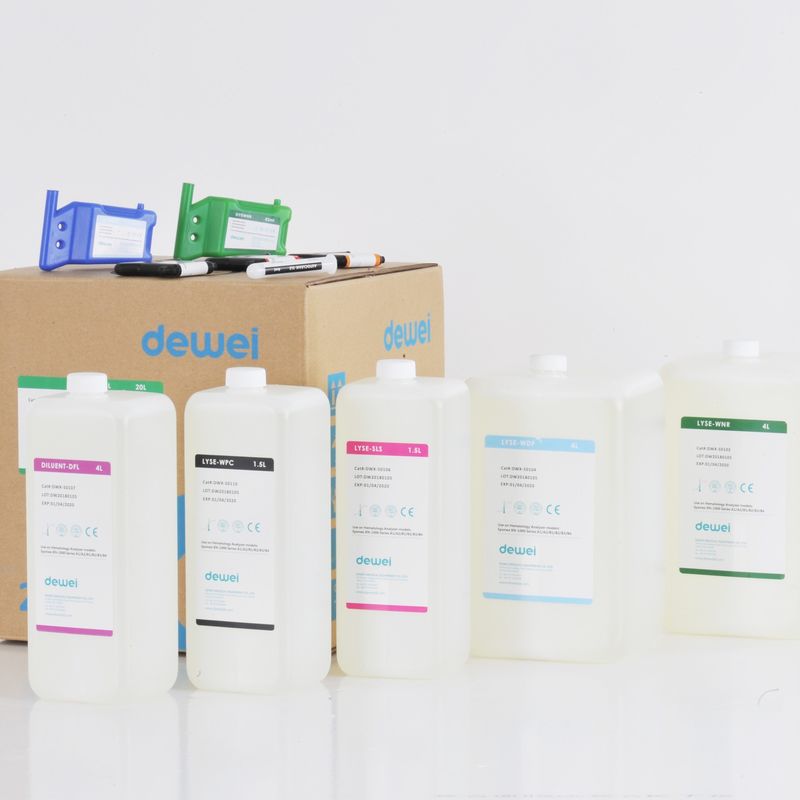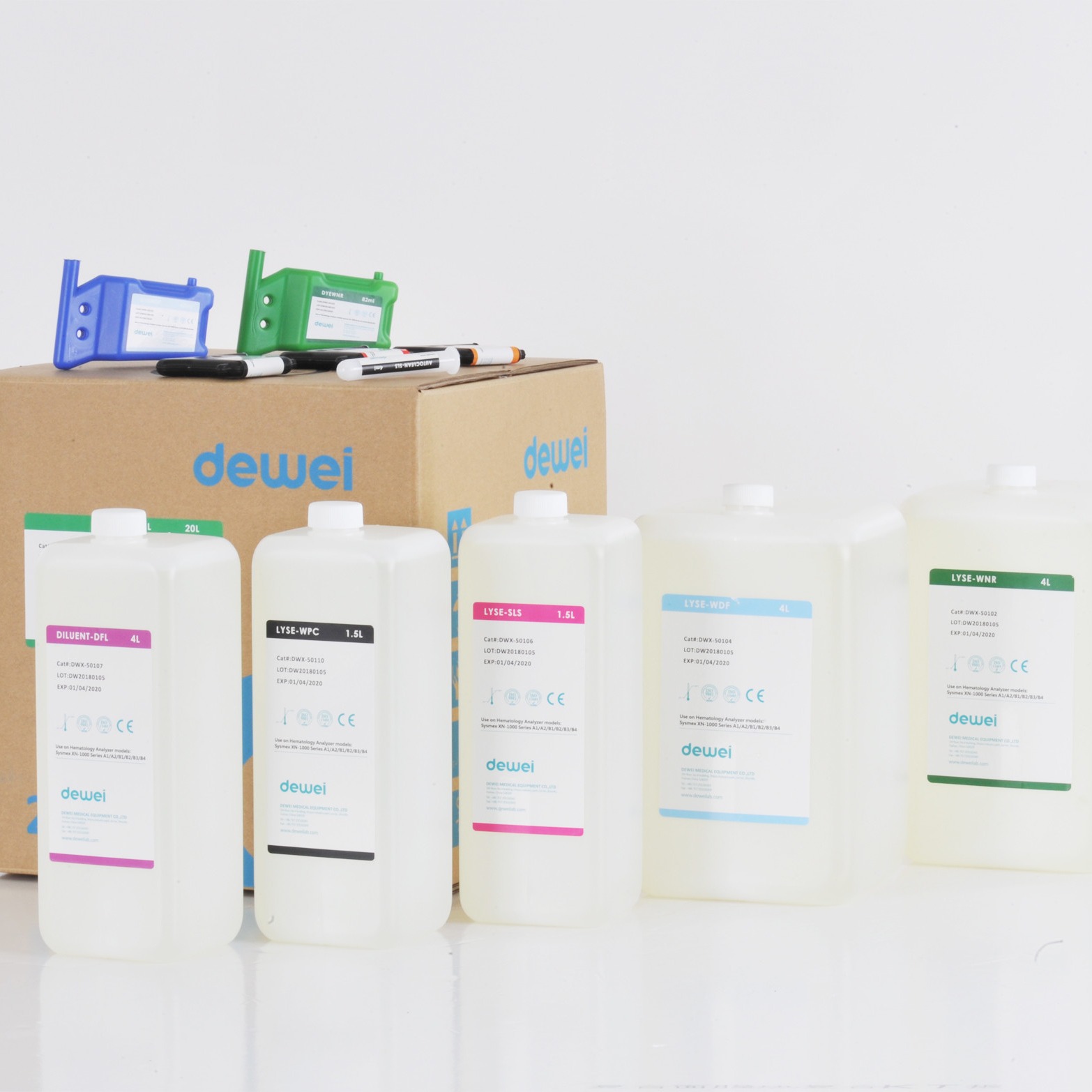Diagnostic Sysmex Hematology Reagents XN-1000 Diluent Lyse Dye Chip Barcode RFID Card
Intended Use of Sysmex Reagents
To be used for blood cell counting, sizing, and WBC differentiation, hemoglobin determination on Sysmex XN Series XN-1000 A1 A2 B1 B2 B3 B4, barcode and chips are offered with closed system, for in vitro diagnostic used.
Specification of XN Reagents
|
Compatible Reagents on XN-1000 Series A1 A2 B1 B2 B3 B4
( with Barcode and chip )
|
| Cat. No |
Description |
Pack Size |
| DWX-50101 |
DILUENT-DCL |
20L |
| DWX-50102 |
LYSE-WNR |
4L*2 |
| DWX-50103 |
DYEWNR |
82ml*2 |
| DWX-50104 |
LYSE-WDF |
4L*2 |
| DWX-50105 |
DYEWDF |
42ml*2 |
| DWX-50106 |
LYSE-SLS |
1.5L*2 |
| DWX-50107 |
DILUENT-DFL |
1.5L*2 |
| DWX-50108 |
DYERET |
12ml*2 |
| DWX-50109 |
AUTOCLEAN-SYS |
4ml*20 |
| DWX-50110 |
LYSE-WPC |
1.5L*2 |
| DWX-50111 |
DYEWPC |
12ml*2 |
| DWX-50112 |
DYEPLT |
12ml*2 |
Attention of CBC Reagents
1. This product is an in vitro diagnostic reagent;
2. Pay attention to seal and prevent pollution;
3. Read the instructions carefully before use, and should stop using them when they exceed the period of validity;
4. If the product freezes, it should be completely defrosted at room temperature and used after mixing.
5. Waste liquid, waste, residual products and treatment of contaminated packaging materials, please comply with local regulations;
6. It is strictly forbidden to eat and avoid contact with eyes and skin. Once Contact your eyes and skin,please clean immediately with plenty of water and seek medical advice.
Limitations of Detection Method
If the temperature of the reagent is out of the specified range, the specimen's measurement parameters may appear abnormal. If in this condition, please confirm the measurement parameters with the microscopy method. Please refer to the instrument operation manual for details.
Storage
The product should be stored in 2℃-35℃ and the storage period is 2 years. After opening the bottle, it is used in 15℃-30℃, and the validity period is 60 days.
Some product questions you may want to ask:
1) What is the principle of 3 part hematology analyzer?
In a 3-part analyzer the cell counting is based on the Coulter Principle. All hematology analyzers utilise Coulter's Principle. 3-part differential cell counter employs Coulter's Principle to determine the size as well as volume of the cells. Coulter's principle is applied employing two electrodes.
2) What is the diluent in the hematology analyzer?
The diluent for the hematology analyzer comprises sodium chloride, sodium sulfate, a phosphate buffer agent, ethylene diamine tetraacetic acid, 1-pyridone-2-sulphur and formaldehyde, and the pH value of the solution is 6.5-7.4, and preferably is 7.2; the content of each component is preferably as follows: 5g/L of ...
3) Which diluent is good for RBC and platelet counting?
For this, the blood specimen is diluted (usually in 1:200 ratio) with the help of RBC diluting fluid (commonly the Hayem's Fluid) which preserve and fix the Red blood cells. The Hayem's fluid is isotonic to the Red blood cells and does not cause any damage to it.
4) What is the use of Lyse in hematology analyzer?
It is used to lyse (destroy) red blood celis for hemogiobin determinations or aid in the counting of white blood cells. Applicable to the hematology analyzers.
5) What are the reagents of hematology Analyser?
At present, hematology analyzers on the market can be divided into 3 part hematology analyzers and 5 part hematology analyzers. Hematology reagents are also indispensable in the use of hematology analyzer. Hematology reagents include hemolytic agents, diluents, cleaning solutions and concentrated cleaning solutions.
6) Which of the following combination of reagents is used to measure hemoglobin?
This is done by adding both potassium cyanide and ferricyanide whose absorbance is then measured at 540 nm using a photoelectric colorimeter against a standard quality control solution. The Hb concentration is then determined by the result produced by the photoelectric colorimeter.
7) Will the quality of CBC reagents change with different temperature?
Normal weather change will not affect the use of the product. If the reagents freeze for low temperature, returning it to room temperature make the ice melt completely and the products can be used normally. Ensurind the ice melt completely otherwise it may cause blockage. The store temperature of hematology reagents is 2-35 degrees, and the biochemical reagents require 2-8 degrees, if not the validity of products will shorten.
8) Does the instrument need to recalibrate and control when using our reagents to replace original one?
Do not need to do calibration again, and do quality control as before.
9) Compared with other compatible hematology reagent companies, what are our advantages?
It is mainly reflected in the following aspects:
1. Professional development of in vitro diagnostic reagents, quality as the first criterion for cooperation.
2. Samples and final products are strictly controlled according to international standards.
3. The reagent of our company has made a detailed comparison with the original reagent, ensuring that there is no difference with the original reagent, and the quality is stable and reliable.
4. Various cooperation methods can be provided to meet the needs of customers: reagent, dry powder reagent, large package, OEM.



 Your message must be between 20-3,000 characters!
Your message must be between 20-3,000 characters! Please check your E-mail!
Please check your E-mail!  Your message must be between 20-3,000 characters!
Your message must be between 20-3,000 characters! Please check your E-mail!
Please check your E-mail! 

